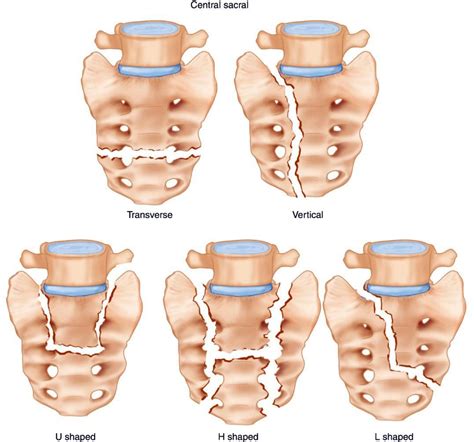Mango fiber, a component of one of the world’s most beloved fruits, is often overlooked for its potential health benefits, particularly in regards to digestion. The fiber content in mangoes can play a significant role in maintaining a healthy digestive system. Here, we’ll delve into eight mango fiber hacks that can help boost digestion, exploring both the science behind mango fiber’s benefits and practical ways to incorporate it into your diet.
Understanding Mango Fiber
Before diving into the hacks, it’s essential to understand what mango fiber is and how it benefits digestion. Mangoes are a rich source of dietary fiber, containing both soluble and insoluble fiber. Soluble fiber can help slow down digestion, allowing for better absorption of nutrients, while insoluble fiber helps add bulk to stool, promoting regular bowel movements and preventing constipation.
1. Incorporate Mango into Your Breakfast
Starting your day with a mango-rich breakfast can set you up for a day of healthy digestion. Try adding mango slices to your oatmeal or yogurt. The combination of mango fiber with other dietary fibers can create a potent digestive aid. For example, a mango and oatmeal bowl with almond milk and a sprinkle of cinnamon not only tastes great but also provides a good mix of soluble and insoluble fiber to kick-start your digestive system.
2. Make a Mango Smoothie
Blending mango with other fruits and a bit of spinach can create a powerful smoothie that’s both delicious and packed with fiber. Adding a handful of spinach will not only increase the fiber content but also provide a boost of antioxidants. Remember, the key to a good digestive smoothie is to balance the ingredients so that it’s not too thick or hard to digest. A basic recipe could include:
- 1 ripe mango, diced
- 1 cup spinach
- 1⁄2 banana
- 1⁄2 cup almond milk
- Ice cubes (as needed)
Blend all the ingredients until smooth, and enjoy as a quick breakfast or a mid-day snack.
3. Use Mango in Your Savory Dishes
Mango doesn’t have to be limited to sweet dishes. It can add a unique flavor and a burst of fiber to savory dishes. Try adding diced mango to your salads or using it as a topping for grilled meats or fish. The sweetness of the mango balances well with spices and herbs, making it a versatile ingredient for various cuisines.
4. Create a Mango Salsa
A mango salsa made with diced mango, onions, jalapeños, cilantro, and lime juice can be a tasty way to add fiber to your meals. This salsa is great as a dip for chips or as a topping for tacos or grilled chicken. The fiber in mango, combined with the antioxidants in lime juice and the capsaicin in jalapeños, makes for a digestive-friendly condiment.
5. Incorporate Mango Fiber into Your Desserts
Even desserts can be a source of dietary fiber. Mango crisps or mango pies can be made with less sugar and more fiber by using almond flour and adding oats or nuts to the crust. These desserts not only satisfy your sweet tooth but also contribute to your daily fiber intake.
6. Try Mango Chia Seed Pudding
Mixing chia seeds with almond milk, honey, and diced mango, then refrigerating overnight, creates a nutritious pudding rich in fiber. Chia seeds absorb liquid and expand, providing an additional source of fiber. This pudding is not only delicious but also packed with nutrients that support digestive health.
7. Make Mango and Avocado Salad
Combining diced mango with avocado, red onion, and a squeeze of lime juice can make for a refreshing and healthy salad. Both mango and avocado are high in fiber, and when combined, they provide a significant boost to digestion. The healthy fats in avocado also aid in the absorption of vitamins and minerals, making this salad a well-rounded digestive aid.
8. Add Mango to Your Homemade Granola
Adding dried mango to your homemade granola mix can increase its fiber content and add natural sweetness. Homemade granola allows you to control the amount of sugar and oil used, making it a healthier option than store-bought varieties. The combination of mango fiber with the fiber from oats and nuts creates a snack that supports digestive health.
Conclusion
Incorporating mango fiber into your diet can have a significant impact on your digestive health. From breakfast smoothies to savory dishes and even desserts, mango is a versatile fruit that can be enjoyed in many ways. Remember, the key to benefiting from mango fiber is to consume it as part of a balanced diet that includes a variety of other fruits, vegetables, whole grains, and lean proteins.
How much fiber does a mango typically contain?
+A medium-sized mango can contain approximately 2.6 grams to 3.3 grams of dietary fiber, depending on the mango variety and ripeness.
Can mango fiber help with weight management?
+Yes, the high fiber content in mango can help with feeling full, which can aid in weight management. Fiber also plays a role in regulating blood sugar levels and promoting healthy gut bacteria, further supporting weight management efforts.
Are there any potential digestive side effects of consuming mango fiber?
+While mango fiber is generally beneficial for digestion, a sudden increase in fiber intake can lead to bloating, gas, or stomach discomfort in some individuals. It's recommended to increase fiber intake gradually to allow the gut microbiome to adjust.
By embracing these mango fiber hacks, you can not only enhance your digestive health but also explore the versatile culinary possibilities that mangoes offer. Whether you’re looking to boost your fiber intake, support healthy digestion, or simply enjoy the flavor and nutritional benefits of mango, incorporating mango fiber into your diet can be a rewarding and delicious choice.



